Search results for: 'For'
-
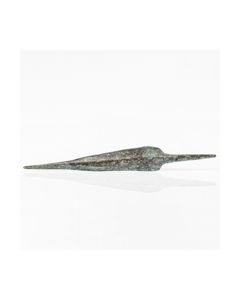 Bronze lance head from the Near East
Bronze lance head from the Near EastFrom the collection of Prof. Ritschel, Salzburg, Austria, president of the local museum association, author of over 50 history books, decorated many times for his achievements.
Price: on request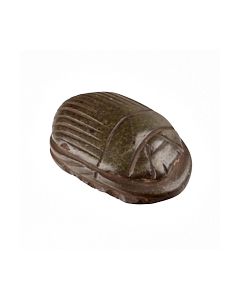 Egyptian scarab
Egyptian scarabThe scarab is relatively big for its kind. It is made of nice dark green serpentinite. From the Late Period of Ancient Egypt.
Price: on request Very long iron lance head
Very long iron lance headExcellent condition for an iron object, mainly intact with very nicely preserved surface. From an old German private collection, acquired in the early 1980s.
€450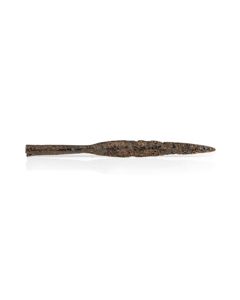 Very long iron lance head
Very long iron lance headExcellent condition for an iron object, mainly intact with very nicely preserved surface. From an old German private collection, acquired in the early 1980s.
€390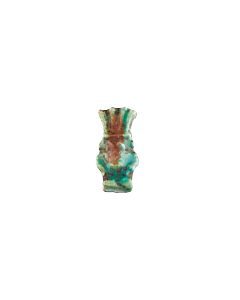 Egyptian amulet of Bes
Egyptian amulet of BesProtective amulet with dwarf god Bes. A typical specimen for its kind from Ancient Egypt.
Price: on request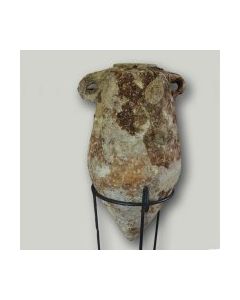 Phoenician wine amphora - found in a shipwreck at Kos island
Phoenician wine amphora - found in a shipwreck at Kos islandDating to the 7th cent. BC. Phoenician production for the wine trade in the Eastern Mediterranean and Carthage.
Price: on request Luristan horse pendant
Luristan horse pendantThe spectacular creature with conjoined horse bodies is characteristic for the bronze works of Lurstian. From the early 1st Millenium BC.
Price: on request Large Luristan horse pendant
Large Luristan horse pendantThe spectacular creature with conjoined horse bodies is characteristic for the bronze works of Luristan. From the early 1st Millenium BC.
Price: on request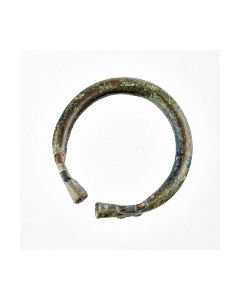 Bracelet from Luristan with animal terminals
Bracelet from Luristan with animal terminalsA high degree of abstraction for the animal heads and a wonderful blue patina make this piece a highlight for Iranian bronze works.
Price: on request Sword of the Urnfield culture from a museum collection
Sword of the Urnfield culture from a museum collectionWonderfully preserved bronze weapon from the time around 1000 BC. It was made in Central Europe by the Urnfield culture and formed part of a museum collection for almost 70 years.
€13,500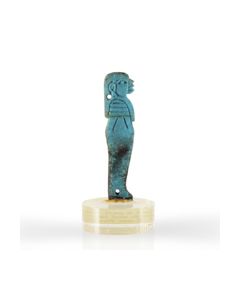 Appliqué of the Horus Son Imsety from Faiyum
Appliqué of the Horus Son Imsety from FaiyumMade of nice turquoise faience. Protective god responsible for the liver of a deceased. From the family of Lawrence of Arabia.
Price: on request Appliqué of the Horus Son Imsety
Appliqué of the Horus Son ImsetyRare variety with wooden core and gilded linen. Protective god responsible for the liver of a deceased. From the family of Lawrence of Arabia.
Price: on request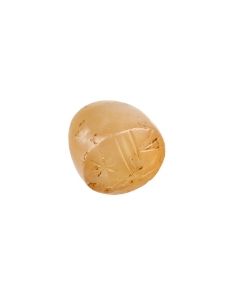 Neo-Babylonian stamp seal with religious scene
Neo-Babylonian stamp seal with religious sceneConical seal made of snowy chalcedony. The scene shows a praying man in front of an altar or symbols for the gods Ishtar and Shamash. Canonical piece for an educational collection.
Price: on request Published Canaanite oil lamp from Adler collection
Published Canaanite oil lamp from Adler collectionShallow bowl with pinch for the wick, typical for the late Iron Age in Southern Israel. From the famous Judge Dr. Steve Adler collection. Exported from Israel with IAA permit Nr. 53397.
€670 Pair of earrings from Luristan
Pair of earrings from LuristanThe earrings date to the early Iron Age of Luristan. The type of jewellery is rare for this region.
Price: on request Pin from Luristan with ibex head
Pin from Luristan with ibex headThe simple pin boosts a highly stylized ibex head. It is a nice example of this popular decoration for Luristan pins.
€148 Celtic fibula
Celtic fibulaRare fibula from the La Tène culture with beautiful enamel inlays. The main material is well preserved for an iron fibula.
Price: on request Neo-Assyrian cylinder seal with preserved bronze setting
Neo-Assyrian cylinder seal with preserved bronze settingFantastic and rare example for a cylinder seal in its original setting. From the reign of Tiglath-Pileser III in the 8th cent. BC.
Price: on request Two Near Eastern weapon points
Two Near Eastern weapon pointsGroup of two bronze points for small spears or large arrows from the Bronze or Early Iron Age. With a nice green patina.
Price: on request Group of 3 Scythian-Greek arrow heads
Group of 3 Scythian-Greek arrow headsCharacteristically shaped ancient bronze arrow heads. With three wings and barbed hooks. Perfect condition with lovely patina. Typical for the Scythians from 700 BC to hellenistic times.
Price: on request Pair of pins with chain
Pair of pins with chainThe pair of pins dates to the early Iron Age of Luristan. It is made from Bronze and Iron. This state of preservation is extremely rare for composite objects.
Price: on request Applique of the Horus son Duamutef
Applique of the Horus son DuamutefBright turquise fayence. Duamutef is one of the four sons of Horus, well-known from the Canopic jars. He had an important protective function for the dead. Egypt, 8th to 4th cent. BC.
Price: on request Lekythos from Toledo Museum collection
Lekythos from Toledo Museum collectionEx collection Prof. G. Olcott, the first Columbia University professor for Roman archeology. Acquired from his estate 1912 by the Toledo Museum (Ohio), in the museum collection until 2017. Found in Apulia.
Price: on request Egyptian overseer figurine
Egyptian overseer figurineFrom a 22nd dynasty tomb containing a large number of ushabtis. Their work performance in the afterlife was to be ensured by the overseer figurine.
Price: on request Luristan bronze standard with ibexes
Luristan bronze standard with ibexesBronze standard with stand from Iron Age Northern Iran. Decorated by a pair of ibexes. Possibly a teraphim, a house god, as referred to in the Old Testament.
€840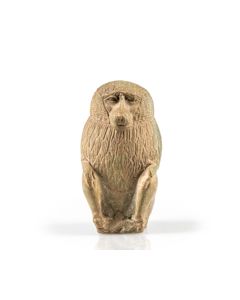 Egyptian faience statuette of a baboon
Egyptian faience statuette of a baboonThe small work of art dates to the Late Period of ancient Egypt. It is worthy to be displayed at a major museum. Published in two works on the famous Epstein collection.
€12,300 Egyptian coffin with snake
Egyptian coffin with snakeThe small bronze votive box is modelled on top with a coiled serpent. The artefact was probably made around 400 BC in Naukratis to be devoted to Atum.
Price: on request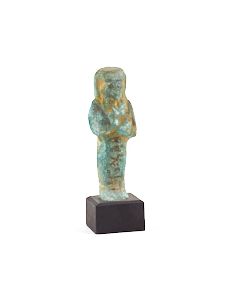 Egyptian ushabti
Egyptian ushabtiFunerary statuette made of turquoise faience with black paint. 21st dynasty of ancient Egypt.
Price: on request Egyptian bronze figurine of Khonsu the Child
Egyptian bronze figurine of Khonsu the ChildRare depiction of the god of the moon Khonsu in the manner of the Egyptian child gods. From the Late Period of Ancient Egypt. A find from Karnak.
Price: on request Large published cypriot krater, ex Sotheby's
Large published cypriot krater, ex Sotheby'sFully preserved piece, very rare for an object of this size. 1977 on exhibition in the Bielefeld Museum of Fine Arts. From an old German private collection, acquired 1971 at Sotheby's. Coming with an ArtLoss certificate.
Price: on request Egyptian mummy beads necklace
Egyptian mummy beads necklaceModern assembled and threaded necklace made from original ancient Egyptian beads. The socalled mummy beads are made of faience and date to the Late Period of ancient Egypt.
Price: on request Egyptian bronze figurine of Horus the Child
Egyptian bronze figurine of Horus the ChildAmulet of the child god in half-seated position. In Egyptian mythology his mother protected him by powerful spells. This protection should be extended to the wearer.
Price: on request Ushabti of the 22nd dynasty
Ushabti of the 22nd dynastyRemarkable Egyptian funerary statuette made of green faience with black paint. Probably from Tanis and made during the 22nd dynasty.
Price: on request Small shabti
Small shabtiNice turquoise faience figurine with black paint. From the 22nd to 25th dynasty of ancient Egypt.
Price: on request Small Egyptian ushabti
Small Egyptian ushabtiFunerary statuette from the Third Intermediate Period of ancient Egypt. Orange-brown clay with green faience.
Price: on request Three arrow heads
Three arrow headsTwo bronze arrow heads from the 1st Millenium AD. One stone arrow head from the Neolithic.
Price: on request

